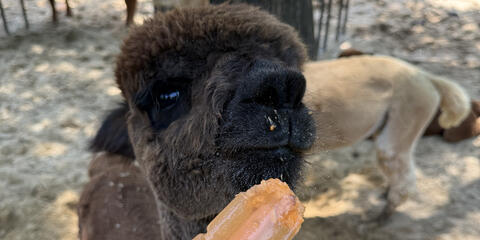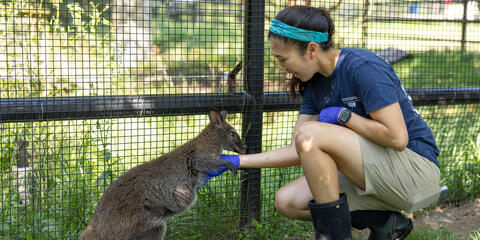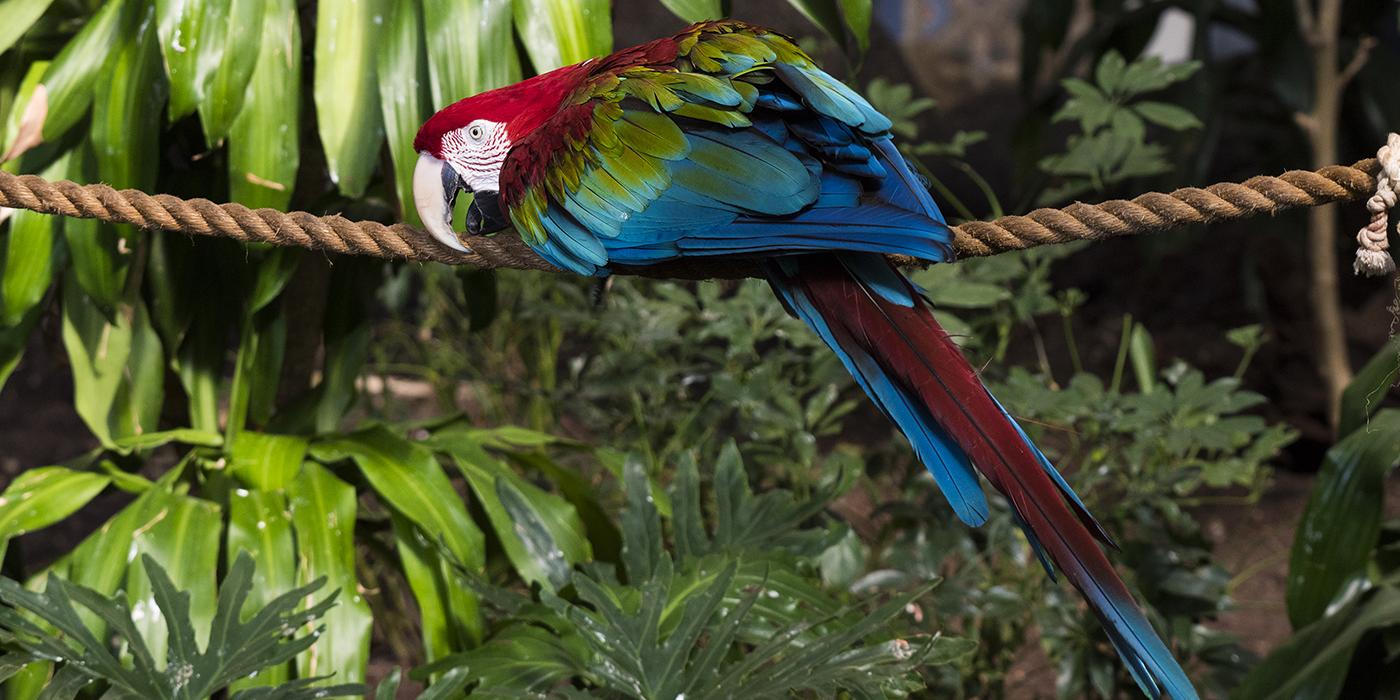Physical Description
The green-winged macaw has a partly red plumage and a blue back and rump. Its long tail is tipped with blue, and its wings are blue with dark green upper wing coverts. The bird's upper beak is horn-colored, and the lower beak is black. It has gray legs. Juveniles resemble adults but have shorter tails.
Native Habitat
They live throughout north and central South America, where they prefer humid, lowland forest. In the southern part of their range, they frequent open habitats, including deciduous forest.
Communication
In flight, these birds call loudly to each other.
Food/Eating Habits
Green-winged macaws eat fruits and nuts. They also ingest mineralized sand and clay, which helps neutralize the toxins in the seeds and nuts they consume.
Social Structure
These birds are often encountered in pairs or small groups, possibly family groups. Green-winged macaws are sometimes associated with other, more common macaws, especially at earth banks, where large numbers will gather to consume exposed mineral sands.
Reproduction and Development
The breeding season varies within this bird's range from late November in the south to February or March in the north. A clutch consists of one to three eggs and incubation lasts about 28 days. The young leave the nest after about 90 to 100 days.
Conservation Efforts
Adult birds are killed for food and for feathers, while the chicks are taken from the nest for the pet trade.
Help this Species
- Practice ecotourism by being an advocate for the environment when you’re on vacation. During your travels, support, visit or volunteer with organizations that protect wildlife. Shop smart too! Avoid buying products made from animals, which could support poaching and the illegal wildlife trade.
- Choose your pets wisely, and do your research before bringing an animal home. Exotic animals don’t always make great pets. Many require special care and live for a long time. Tropical reptiles and small mammals are often traded internationally and may be victims of the illegal pet trade. Never release animals that have been kept as pets into the wild.
- Share the story of this animal with others. Simply raising awareness about this species can contribute to its overall protection.
Animal News

Keeping the Farm Animals Cool with Frozen Treats




